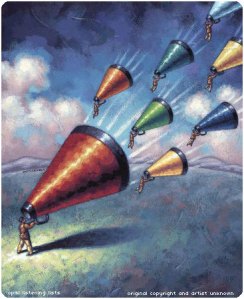 In last week’s Atlanta Business Chronicle, Ken Bernhardt discussed the changing role of the Chief Marketing Officer – from one who just focuses on marketing, to one who should serve as a strategic adviser to the CEO.
In last week’s Atlanta Business Chronicle, Ken Bernhardt discussed the changing role of the Chief Marketing Officer – from one who just focuses on marketing, to one who should serve as a strategic adviser to the CEO.
The key to achieving the strategic adviser role is getting closer to the consumer.
Bernhardt goes on to discuss the role of research in gaining that consumer insight even in product development, yet “approximately half of companies surveyed use research in the product development process”.
When was the last time you spoke with your audience? Reaching consumers is now easier than ever with social networking tools like blogs, Facebook, and Twitter.
Monitoring what they say about your products and services can provide great insight on how to position your services or develop new products. It allows you to have an ongoing pulse on your market.
Sometimes more formal research is needed beyond monitoring consumer feedback. An investment in research can easily pay for itself by allowing your company to better focus resources on things consumers want or marketing your product more effectively. And with online research tools, market research is more cost effective than ever.
If you can do only one thing to better market your business, talking with your audience should be that one thing.





